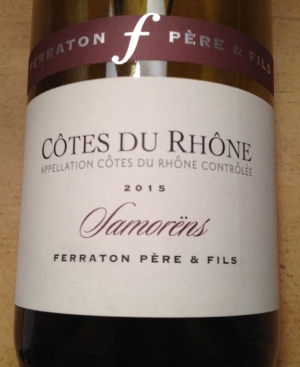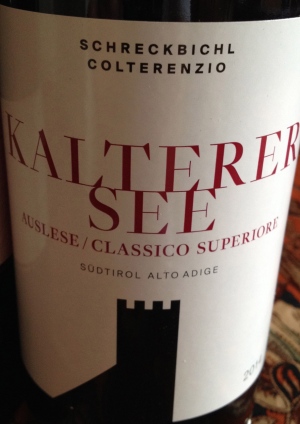Below are 10 wines for summer drinking. They are all under $20 and most have a low alcohol content.
 Prosecco Rosé DOC Extra Dry Millesimo NV (Veneto) Albino Armani made from 90% Glera and 10% Pinot Noir. The production area is Alta Grave Friulana and the training system is Guyot. When the cuveé is ready a long second fermentation takes place in pressure tanks (Charmat method) for at least 60 days in order to obtain a more refined perlage and complex aromas from the Pinot Noir. This is a fruit forward wine with hints of lilacs, strawberry, and raspberry. Alcohol 11% $16
Prosecco Rosé DOC Extra Dry Millesimo NV (Veneto) Albino Armani made from 90% Glera and 10% Pinot Noir. The production area is Alta Grave Friulana and the training system is Guyot. When the cuveé is ready a long second fermentation takes place in pressure tanks (Charmat method) for at least 60 days in order to obtain a more refined perlage and complex aromas from the Pinot Noir. This is a fruit forward wine with hints of lilacs, strawberry, and raspberry. Alcohol 11% $16
 Prosecco DOC Rosè Extra Dry (Veneto) Corvezzo made from Glera and Pinot Nero. The training system is Sylvoz (variation of the trellis system) and the grape harvest is mechanized. There is soft cold crushing and pressing. The second fermentation is for 60 days using the Charmat method. Residual sugar 12g/l. The wine has hints of strawberries, notes of citrus fruit and a touch of wildflowers Alcohol 11.5%. $14
Prosecco DOC Rosè Extra Dry (Veneto) Corvezzo made from Glera and Pinot Nero. The training system is Sylvoz (variation of the trellis system) and the grape harvest is mechanized. There is soft cold crushing and pressing. The second fermentation is for 60 days using the Charmat method. Residual sugar 12g/l. The wine has hints of strawberries, notes of citrus fruit and a touch of wildflowers Alcohol 11.5%. $14
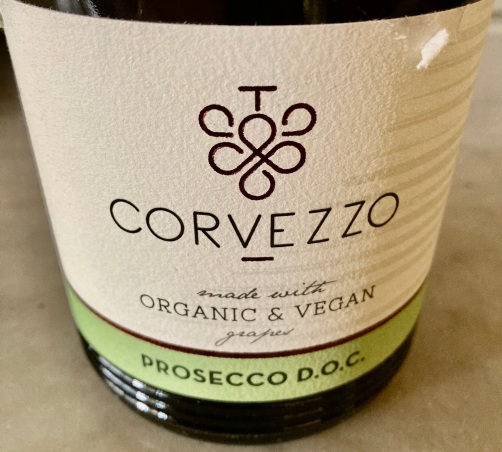 Prosecco DOC Corvezzo made from 85% Glera and 15% permitted grapes. The growth system is Sylvoz and the harvest is mechanized. There is a soft cold crushing and pressing of the grapes. The second fermentation is for 60 days using the Charmat method. This is a dry Prosecco that has hints of apple and pear with floral notes and a touch of lemon. Alcohol 11.5%. $14
Prosecco DOC Corvezzo made from 85% Glera and 15% permitted grapes. The growth system is Sylvoz and the harvest is mechanized. There is a soft cold crushing and pressing of the grapes. The second fermentation is for 60 days using the Charmat method. This is a dry Prosecco that has hints of apple and pear with floral notes and a touch of lemon. Alcohol 11.5%. $14
 Colli Euganei Pinella Azieanda (Veneto) Agricola Reassi made from 100% Pinella (white grape). The vineyards are at 120 meters and the exposure is north. The training system in guyot. Harvest is the 2nd week of September. The soil is clay and silt and there are 4,500 plants per hectare. The vines were planted in 2008. There is a manual selection and harvest of the grapes The grapes are destemmed followed by a short maceration and a short pressing, Fermentation for about two weeks. at a low temperature. Maturation on the lees until spring with periodic lees stirring. The second fermentation is in stainless steel tanks using the Martinotti method. The wine remains in bottle for 3 months before release. The wine is slightly off dry and slightly sparkling (frizzante) with hints of pear, peach, lemon, lime and good minerality. It is very refreshing and easy to drink. Pinella is a very rare grape variety indigenous to the Colli Euganei. Alcohol 12%. $19
Colli Euganei Pinella Azieanda (Veneto) Agricola Reassi made from 100% Pinella (white grape). The vineyards are at 120 meters and the exposure is north. The training system in guyot. Harvest is the 2nd week of September. The soil is clay and silt and there are 4,500 plants per hectare. The vines were planted in 2008. There is a manual selection and harvest of the grapes The grapes are destemmed followed by a short maceration and a short pressing, Fermentation for about two weeks. at a low temperature. Maturation on the lees until spring with periodic lees stirring. The second fermentation is in stainless steel tanks using the Martinotti method. The wine remains in bottle for 3 months before release. The wine is slightly off dry and slightly sparkling (frizzante) with hints of pear, peach, lemon, lime and good minerality. It is very refreshing and easy to drink. Pinella is a very rare grape variety indigenous to the Colli Euganei. Alcohol 12%. $19
 Montefili Rosato (Tuscany) Vecchie Terre di Montefili made from 100% Sangiovese from a 500 meter vineyard first planted in 1995. The soil is galestro and alberese and the training system is spurred cordon. Spontaneous fermentation takes place with indigenous yeast. Skin contact is for 6/7 hours and fermentation is at a low temperature. The wine remains in stainless steel tanks and then in bottles for 3 months. This is a fresh fruity wine with hints of strawberries, raspberries, a touch of red currents and good acidity. $18
Montefili Rosato (Tuscany) Vecchie Terre di Montefili made from 100% Sangiovese from a 500 meter vineyard first planted in 1995. The soil is galestro and alberese and the training system is spurred cordon. Spontaneous fermentation takes place with indigenous yeast. Skin contact is for 6/7 hours and fermentation is at a low temperature. The wine remains in stainless steel tanks and then in bottles for 3 months. This is a fresh fruity wine with hints of strawberries, raspberries, a touch of red currents and good acidity. $18
Monte Velho White Esporão (Portugal) made with Antão, Vaz, Perrum and Roupeiro grapes from throughout the region. The soil is of a granitic/schistose nature with an open clay structure. The average age of the vineyards is 18 years. The grapes are destemmed, cooled, and then pressed followed by a must decantation and fermentation in temperature controlled stainless steel vats. Then centrifuging, stabilization and filtration. No use of pesticides and herbicides in the vineyards 12.5%. $14
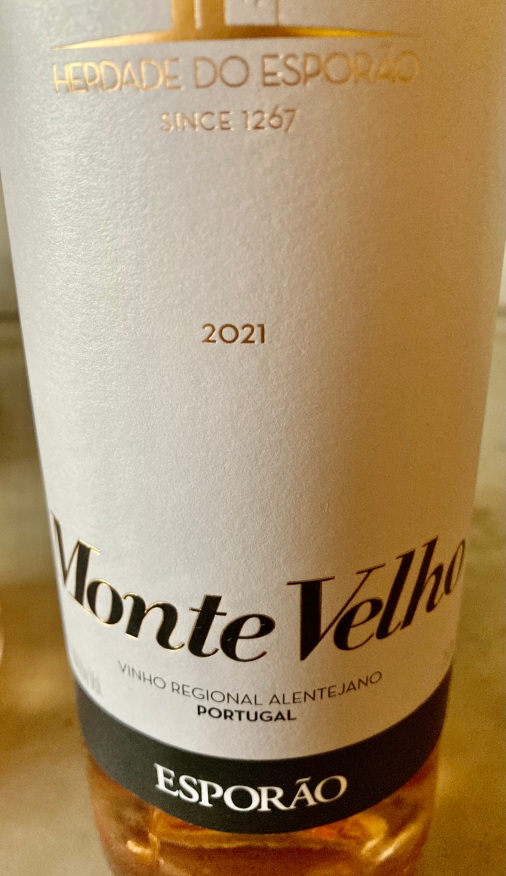 MonteVelho Rosè Esporão(Portugal )made from Touriga Nacional, Aragones and Syrah. The soil is granite/schist with a loam clay structure. The wines on the average are 18 years old. The grapes are destemmed, cooled, and after a brief skim maceration they are pressed. Fermentation is at a controlled temperature in stainless steel vats. Then centrifugation, stabilization and filtration. The wine has hints a strawberries, raspberries and touch of mint. 12.5% $14
MonteVelho Rosè Esporão(Portugal )made from Touriga Nacional, Aragones and Syrah. The soil is granite/schist with a loam clay structure. The wines on the average are 18 years old. The grapes are destemmed, cooled, and after a brief skim maceration they are pressed. Fermentation is at a controlled temperature in stainless steel vats. Then centrifugation, stabilization and filtration. The wine has hints a strawberries, raspberries and touch of mint. 12.5% $14
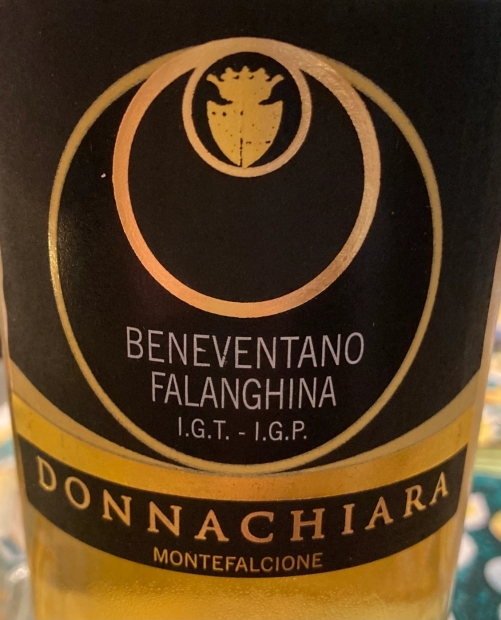 Beneventano Falanghina IGT (Campania) Donnachiara made from 100% Falanghina. The vineyard is the Torre Cuso, the best location for Falanghina. The soil is volcanic, chalky clay, the vines are 16 years old, the training system is guyot and there are 2,500 vines per hectare. The grapes are not destemmed or crushed before pressing. Cold fermentation is in stainless steel and there is extended maceration. This is a crisp white wine with citrus fruit aromas and flavors, nice acidity and good minerality. It is one of my favorite white wines. Alcohol 12.5 $18
Beneventano Falanghina IGT (Campania) Donnachiara made from 100% Falanghina. The vineyard is the Torre Cuso, the best location for Falanghina. The soil is volcanic, chalky clay, the vines are 16 years old, the training system is guyot and there are 2,500 vines per hectare. The grapes are not destemmed or crushed before pressing. Cold fermentation is in stainless steel and there is extended maceration. This is a crisp white wine with citrus fruit aromas and flavors, nice acidity and good minerality. It is one of my favorite white wines. Alcohol 12.5 $18
 Pinot Grigio Alto Adige DOC Peter Zimmer. Made from a selection of grapes from the best vineyards of the valley floor and the steep slopes nearby. The soil here is stony, sandy and extremely chalky. The low yields per hectare and this particular terroir combines for a very particular Pinot Grigio. The grapes are gently pressed, then clarified through the natural settling of sediment. Alcoholic fermentation is carried out with pure strains of yeast in temperature controlled stainless steel tanks. Malolactic fermentation does not occur. The wine remains on the lees for several months before it is bottled. It has more depth than most Pinot Grigio, with ripe fresh fruit, a touch of pear, and a hint of spice, good mineral character and fresh acidity. Alcohol 12.5% $17
Pinot Grigio Alto Adige DOC Peter Zimmer. Made from a selection of grapes from the best vineyards of the valley floor and the steep slopes nearby. The soil here is stony, sandy and extremely chalky. The low yields per hectare and this particular terroir combines for a very particular Pinot Grigio. The grapes are gently pressed, then clarified through the natural settling of sediment. Alcoholic fermentation is carried out with pure strains of yeast in temperature controlled stainless steel tanks. Malolactic fermentation does not occur. The wine remains on the lees for several months before it is bottled. It has more depth than most Pinot Grigio, with ripe fresh fruit, a touch of pear, and a hint of spice, good mineral character and fresh acidity. Alcohol 12.5% $17
 Schiava Alto Adige DOC Peter Zemmer Made from a blend of various varieties of Schiava. The training system is pergola (traditional trellis system). The soil is loamy. The stems are immediately removed and the grapes are fermented for 8 days at a constant temperature. The must is kept in regular contact with the skins through circulation pumping and gentle pressure from below. This is a fresh fruity red wine with red and black fruit aromas and flavors with a note of strawberry and a touch of bitter almond. It is the perfect red wine for summer. Alcohol12.5%. It should be served slightly chilled $17
Schiava Alto Adige DOC Peter Zemmer Made from a blend of various varieties of Schiava. The training system is pergola (traditional trellis system). The soil is loamy. The stems are immediately removed and the grapes are fermented for 8 days at a constant temperature. The must is kept in regular contact with the skins through circulation pumping and gentle pressure from below. This is a fresh fruity red wine with red and black fruit aromas and flavors with a note of strawberry and a touch of bitter almond. It is the perfect red wine for summer. Alcohol12.5%. It should be served slightly chilled $17



